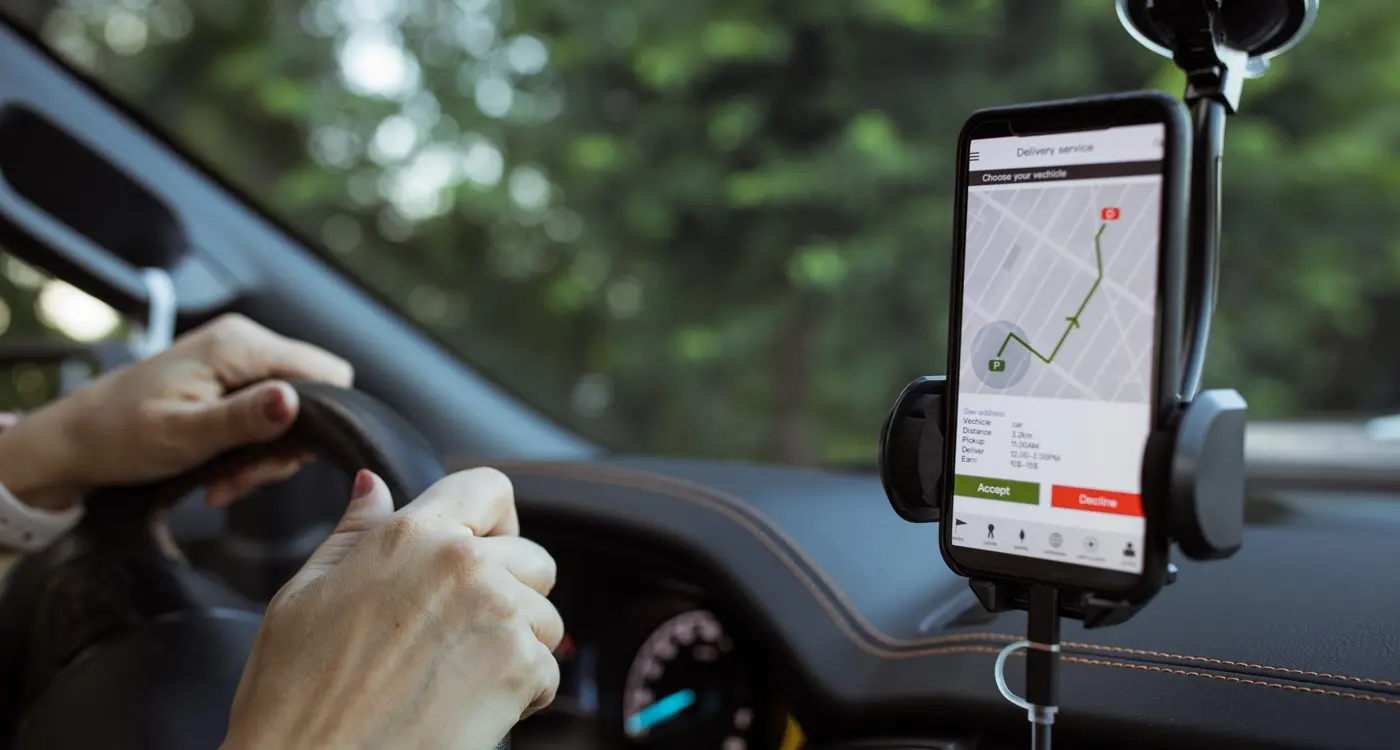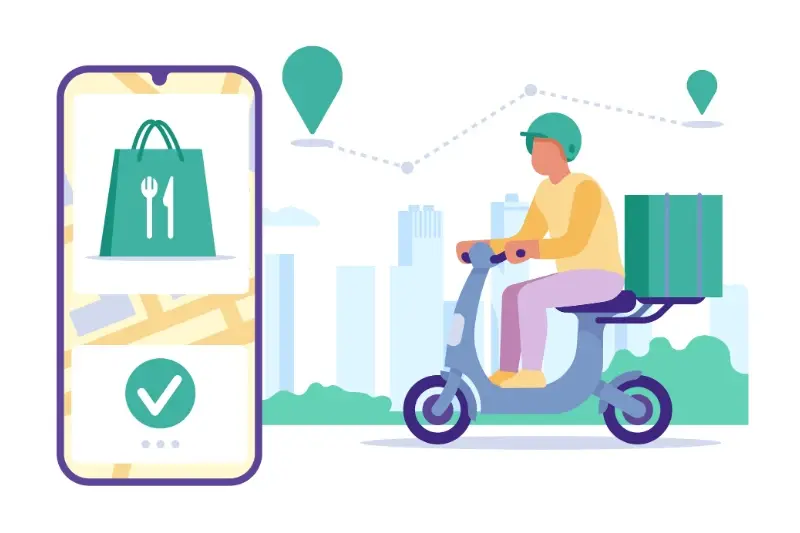Last-Mile Delivery Apps: How to Build Technology That Actually Delivers
You order something online and then spend the next three days refreshing the tracking page every hour, wondering why your package seems to be taking a world tour before reaching your doorstep. Sound familiar? This frustration isn't just annoying customers—it's costing businesses millions in lost sales and damaged reputations.
Last-mile delivery has become the make-or-break moment for countless businesses. It's that final stretch from the local depot to your front door, and frankly, most companies are getting it wrong. Customers expect their parcels to arrive quickly, safely, and with real-time updates; when that doesn't happen, they simply shop elsewhere next time.
The last mile of delivery accounts for over half of total shipping costs, yet it's where most customer complaints originate
Building a last-mile delivery app isn't just about putting a map on a screen and hoping for the best. After years of working with logistics companies and delivery startups, I've seen what separates apps that work from those that crash and burn. The successful ones solve real problems—they reduce delivery times, cut costs, and most importantly, they keep customers happy. The failures? They focus on flashy features instead of the basics that actually matter.
If you're thinking about building a delivery app, you're entering a space where logistics technology can genuinely transform how businesses operate. But here's the thing: it's not about having the most features or the prettiest interface. It's about building something that actually works when a driver is rushing through traffic, when a customer changes their address last minute, or when weather disrupts your entire delivery schedule. That's what we'll explore in this guide.
Understanding Last-Mile Delivery Challenges
Let's be honest—last-mile delivery is the trickiest part of the entire shipping process. It's where packages go from a central hub to someone's front door, and that's where things get complicated. You've got traffic jams, wrong addresses, people not being home, and drivers trying to find obscure apartment blocks. It's no wonder this final stretch accounts for over half of total shipping costs.
The biggest headache? Time pressure. Customers want their stuff fast—preferably yesterday—but drivers are dealing with unpredictable routes and delivery windows that change by the minute. Then there's the communication breakdown; customers don't know when their delivery will arrive, drivers can't reach recipients, and everyone ends up frustrated.
The Main Pain Points
- Failed delivery attempts when customers aren't home
- Inaccurate addresses and poor GPS data
- Traffic congestion and parking limitations
- Rising fuel costs and driver shortages
- Customer complaints about late deliveries
- Returns and damaged packages
Here's what makes it worse—traditional delivery methods rely on outdated systems that don't talk to each other properly. Dispatchers are juggling phone calls, drivers are working with paper routes, and customers are left guessing when their order will show up.
But here's the thing: these challenges create massive opportunities for smart app developers. When you understand what's actually broken in the delivery process, you can build technology that solves real problems. That's where the magic happens—not just moving boxes around, but creating systems that make everyone's life easier. The future might even see automated drone delivery solutions addressing some of these traditional challenges.
Planning Your App's Core Features
Right, so you've decided to build a last-mile delivery app. Good for you—but before you start sketching wireframes or choosing colour schemes, we need to talk about what your app actually needs to do. This is where I see most people get carried away with bells and whistles when they should be focusing on the basics.
Your delivery app needs four core features that work brilliantly: order management, driver dispatch, real-time tracking, and customer communication. That's it. Everything else is nice-to-have territory. Order management lets customers place orders and businesses process them; driver dispatch connects available drivers to jobs efficiently; tracking shows everyone where packages are; communication keeps all parties informed when things change.
Getting the Basics Right First
I know it's tempting to add loyalty programmes, social sharing, or AI-powered route suggestions right from the start. Don't. These features mean nothing if your basic logistics technology can't handle a simple delivery request without crashing. Start with your minimum viable product—the simplest version that actually works.
Map out each user journey before writing a single line of code. Customer placing order, driver accepting job, business updating status—walk through every step and identify potential friction points.
User Roles and Permissions
Your app will serve three different user types: customers, drivers, and business operators. Each needs different information and different controls. Customers want simplicity—place order, track delivery, receive updates. Drivers need job details, navigation, and delivery confirmation tools. Business operators require dashboard views, analytics, and the ability to manage both orders and drivers. Plan these experiences separately, then think about how they connect. Many of these requirements overlap with fleet management logistics applications.
Designing for Speed and Simplicity
When I'm working on delivery apps, I see the same mistake over and over again—teams trying to cram every possible feature into the interface. They think more buttons and options means better functionality, but that's completely backwards. Your delivery drivers are moving fast, often in stressful situations, and your customers just want to know where their order is.
Speed isn't just about how quickly your app loads (though that matters too). It's about how fast someone can complete their task. A driver should be able to mark a delivery as complete in two taps maximum. A customer should see their order status within three seconds of opening the app. These aren't arbitrary numbers—they're based on real user behaviour patterns we've observed across dozens of delivery apps.
Key Design Principles for Delivery Apps
- Use large, thumb-friendly buttons that work with gloves
- Keep critical actions above the fold on all screen sizes
- Limit colour choices to three main colours plus white and black
- Make text readable in bright sunlight—delivery happens outdoors
- Use familiar icons that don't require learning
The tricky bit is balancing simplicity with functionality. Your app needs to handle complex logistics behind the scenes whilst presenting a clean, straightforward interface. Think about what information is absolutely necessary at each step of the delivery process. Everything else should be tucked away in secondary screens or removed entirely.
Common Interface Mistakes to Avoid
Don't make users scroll to find primary actions. Don't use tiny touch targets—fingers are bigger than mouse cursors. And please, don't auto-refresh the screen whilst someone is trying to tap something. I've seen drivers accidentally mark wrong addresses because the interface shifted at the last second. These common development pitfalls make the difference between an app that works and one that frustrates users into finding alternatives.
Building Real-Time Tracking Systems
Real-time tracking is what separates decent last-mile delivery apps from the ones people actually want to use. Think about it—when you order something, the first thing you do after placing that order is wonder where it is, right? That's human nature, and your logistics technology needs to account for it.
The technical backbone of tracking systems relies on GPS data, API integrations, and WebSocket connections to push updates instantly. But here's the thing—getting the technical bits right is only half the battle. The other half is presenting that information in a way that doesn't overwhelm your users or your delivery drivers.
Choosing Your Tracking Approach
You've got two main options: build your own tracking system from scratch or integrate with existing mapping services like Google Maps or Mapbox. Most agencies I work with lean towards integration because it's faster and more reliable. Building your own means months of development time and ongoing maintenance headaches.
The best tracking system is the one your customers don't have to think about—it just works when they need it
Managing Data Without Breaking Things
Here's where things get tricky. Real-time tracking generates loads of data—location updates every few seconds, status changes, estimated arrival times that need constant recalculation. Your system needs to handle this without slowing down or crashing when you have hundreds of drivers on the road simultaneously. Server-side caching and smart update intervals are your friends here; you don't need to ping locations every single second to create a smooth user experience. Understanding how to properly implement GPS tracking is crucial for this foundation.
Integrating Payment and Communication Tools
Here's the thing about payment systems in delivery apps—they need to work perfectly every single time. There's nothing worse than having a customer ready to pay and the transaction fails. I've seen apps lose thousands of customers because their payment flow was clunky or unreliable.
Start with the basics: integrate multiple payment options because people have preferences. Some love Apple Pay, others prefer card payments, and many still use PayPal. Don't forget about digital wallets like Google Pay—they're becoming more popular by the day. The key is making the checkout process as smooth as possible; ideally just one or two taps and they're done.
Building Trust Through Communication
Communication tools are just as important as payments, though many developers overlook this. Your app needs real-time messaging between customers, drivers, and support teams. Think about it—when someone's waiting for their food or package, they want updates. Not just automated ones, but the ability to actually speak to their driver if needed.
Push notifications are your best friend here. Use them to confirm orders, update delivery status, and notify about any delays. But don't overdo it—nobody wants their phone buzzing every few minutes. Smart notification strategies that add value are what separate good apps from annoying ones.
Security Can't Be an Afterthought
Both payment and communication features need bulletproof security. Use end-to-end encryption for messages and ensure all payment data meets PCI compliance standards. Your customers are trusting you with sensitive information—respect that trust by building security into every layer of your app, not bolting it on afterwards.
Testing and Launching Your Delivery App
Right, you've built your last-mile delivery app and it looks brilliant on your developer's laptop. But here's the thing—that means absolutely nothing until real people start using it in the wild. I've seen too many apps that worked perfectly in controlled environments fall apart the moment they hit actual delivery routes with dodgy phone signals and stressed-out drivers.
Start with beta testing using a small group of actual delivery drivers and customers. Not your mates or colleagues—real users who don't care about hurting your feelings. Give them scenarios that mirror peak delivery times: multiple orders, GPS glitches, payment failures. Watch how they behave when the app doesn't do what they expect; their frustration will show you exactly what needs fixing.
Load Testing Your Logistics Technology
Your app might handle ten orders beautifully, but what happens when Black Friday hits and you're processing hundreds? Load testing isn't glamorous, but it's what separates apps that crash under pressure from those that scale. Test your real-time tracking system when multiple drivers are updating locations simultaneously—this is where most delivery apps break.
Launch in one small geographic area first. It's tempting to go big immediately, but starting small lets you fix problems quickly without damaging your reputation across multiple markets.
The Soft Launch Strategy
Don't announce your app to the world on day one. Soft launches give you breathing room to iron out issues while building genuine user feedback. Monitor your crash reports daily—every crash represents a frustrated user who might not give you a second chance. Once you're confident the app handles real-world chaos, then you can think about scaling up. Understanding what makes stellar apps stand out during this phase can help you identify the improvements that matter most.
Conclusion
Building a successful last-mile delivery app isn't just about writing code and launching it into the app store—though I wish it were that simple! The companies that actually make it in this space understand that delivery apps are really about solving problems for real people. Your customers want to know where their order is, when it'll arrive, and they want the whole process to feel effortless.
Throughout this guide, we've covered the technical bits: real-time tracking, payment integration, user interface design. But here's what eight years of building apps has taught me—the technology is only as good as the problem it solves. Your app needs to make someone's life easier, whether that's getting their groceries delivered on a busy Tuesday or ensuring their birthday gift arrives exactly when promised. If you're curious about the costs involved, you might find it helpful to understand what it typically costs to build professional delivery applications.
The delivery market is crowded, there's no getting around that. But there's still room for apps that do things properly. Focus on getting the basics right first: reliable tracking, smooth payments, clear communication. Don't try to revolutionise everything at once—users just want their stuff delivered without hassle.
Testing matters more than you think, especially with delivery apps where real people and real packages are involved. Launch small, learn fast, and keep improving. The best delivery apps I've worked on started simple and grew into something special because they listened to their users and kept making things better.
Your delivery app has the potential to become part of people's daily routine. That's both an opportunity and a responsibility worth taking seriously.
Share this
Subscribe To Our Blog
You May Also Like
These Related Stories

The Hidden Complexities of Building a Successful Food Delivery App

Food Delivery App Success Stories: What We Can Learn From the Winners





